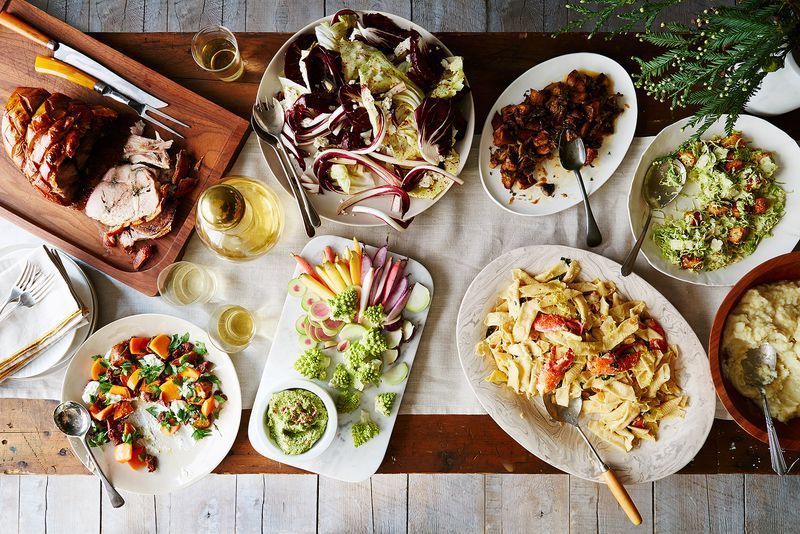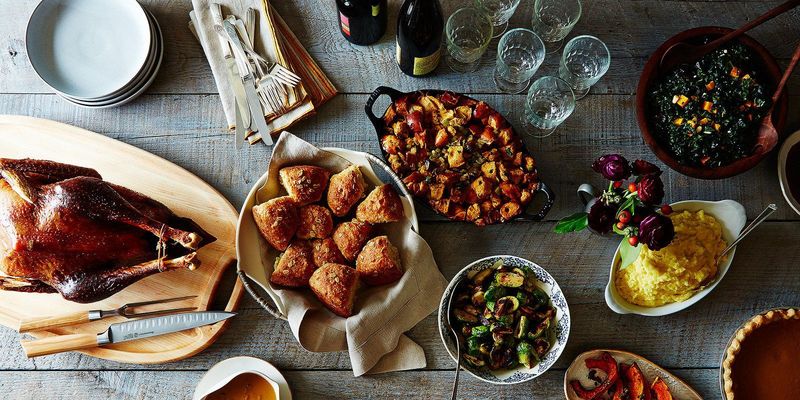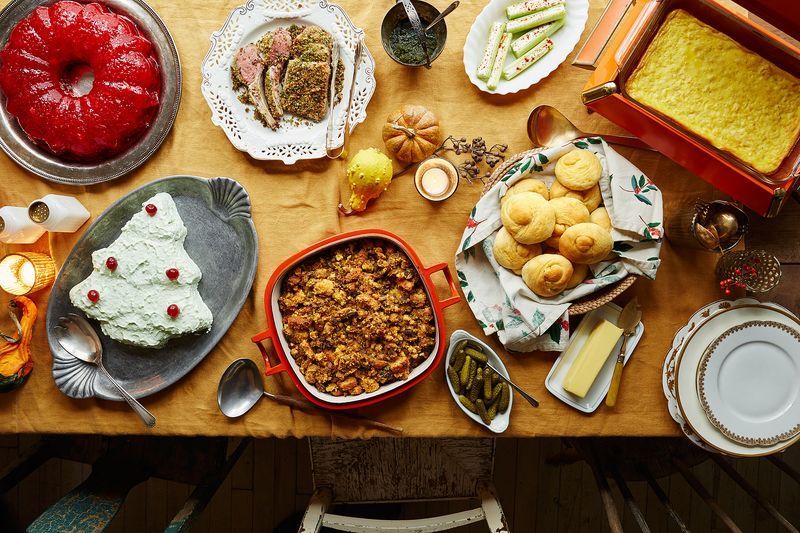
I recently found myself at lunch in a traditional Indonesian restaurant called Lara Djonggrang in Jakarta
with about six dishes in front of me. (Yes, I am very lucky.)
There was rice (duh); rice cooked in coconut milk and topped with crispy fried shallots; skipjack tuna in a fiery chile sauce; creamy mushrooms cooked in banana leaves; battered and fried tempeh; tomato-watery spinach; and soursop juice. (And other items I must be forgetting.)

I was with my friend Stephanie, who grew up in Jakarta and, thankfully, was happy to orchestrate the entire ordering process.
As we scooped and topped, scooped and topped, she explained that she spent her first three years in the U.S (she went to college in Chicago) eating food from her friends' plates as if it were totally socially acceptable behavior.
And while she learned that taking forkfuls from dinner companions (especially without asking) is not the standard cultural practice here—where we tend not to share our food, especially when we're eating outside the home—she also noticed that that is not the case at Indian or Thai or Chinese restaurants.

Why do we limit sharing plates and ordering lots of communal dishes to rice or noodles or curries (or tapas)? Some of my most memorable, least stressful meals have been when the table is full of various plates, only some of which I would have chosen for my own meal. (Sometimes I like to place a request for the item that catches my eyes; other times, like in Jakarta, I'd rather leave it up to experts.)
In Amanda Hesser's book Cooking for Mr. Latte, on the other hand, she describes being "caught up in a terrible gastronomic eddy" when sharing a meal with a group of foodies at Tom Colicchio's Craftrestaurant.
When I go out to a restaurant, I do not like feeling as if I'm at a buffet. I like to construct my meal thoughtfully and then eat it. I don't want to pass plates and I don't want someone plopping a slab of his skate in my lamb jus. It's disrespectful to the chef, who tries to create dishes that entertain your palate from the first bite to the last. And it's greedy. If you must taste things on the menu, come back another time.
I agree with a lot of these points. Yes, sharing plates can get out of control: At its worst, you're overwhelmed and all the good stuff is taken before you get to it and you end up accidentally eating a piece of bacon even though you've been a vegetarian for 15 years and at the end you leave hungry.
I also don't think anyone should be forced to compromise when they're devoted to their personal plate or that sharing is appropriate at every restaurant.
And there's definitely a difference between intentional family-style eating and the awkward situation that happens when every person at the table wants to try your food.

But more often than not, I'm an advocate of sharing (and if we're not sharing explicitly, I just might ask for a taste from your plate). Here's why:
1) You don't have to agonize over what you're going to order.Because of budgetary constraints and the sheer number of restaurants in New York/the world, I often visit a place just once, which means Ido want to be greedy and try as many things as possible. I like to minimize opportunity cost: roads not traveled, salads not tried.
2) You can let other people do the work for you. While I wish I knew how to compose a perfect meal from a restaurant menu, I don't have that sort of knowledge (or confidence) yet. In many cases, I'd rather defer to my better-informed dinner companions and learn from watching and experiencing. (That's right: I'm greedy and lazy.)
3) It's easier to have a well-balanced meal. On a typical night, I probably wouldn't order a starter and a salad and an entrée and a dessert. But when plates are shared, it's easy to have a little of everything (to order 3 salads for a table of 5 instead of a salad per person, for example), which provides a better mix of foods: cold, hot, green, white, savory, sweet, soup, solid. Just think: You can have protein and pasta without having to order both!

4) You'll end up trying new things and discovering flavors and ingredients you would have otherwise missed. Not only does sharing plates reduce risk—you can order that uni pasta without committing to finishing it, you can try fennel for the 600th time—but it also exposes you to all sorts of things you might never have ordered for yourself at all. I hadn't tried shrimp or sashimi or olives until I'd been nudged to taste what was already on the table. You can also go tothe pizza restaurant and order a few non-pizza entrées (which may be very good) without feeling like you're making a grave error.
5) It will probably be less expensive in the end. Unless someone orders wine for the table and you're not drinking. Then you're basically screwed.
6) It's more interesting. Maybe this doesn't apply to the highest-end restaurants—and I do understand that the chef is working to sustain my interest through the entire dish—but sometimes, by the fifth ravioli, I could use a change of pasta pace. Sharing plates ensures that I'm never bored and provides a broader view of the kitchen's exciting skills.

7) There's less of a focus on an individual's dietary restrictions or eating habits or food "quirks." So one friend's vegan and one friend's gluten-free and one friend only eats foods that start with the letter "b." Instead of putting that person in the spotlight while he or she has a back-and-forth with the server, order a variety of foods—some of which accommodate dietary restrictions—and everyone will be more comfortable. There's more focus on communal eating and less on what each individual is or is not putting on the plate.
8) There's more to talk about! Everyone's eating and enjoying and critiquing the same foods, which makes for better conversation.





Комментариев нет:
Отправить комментарий